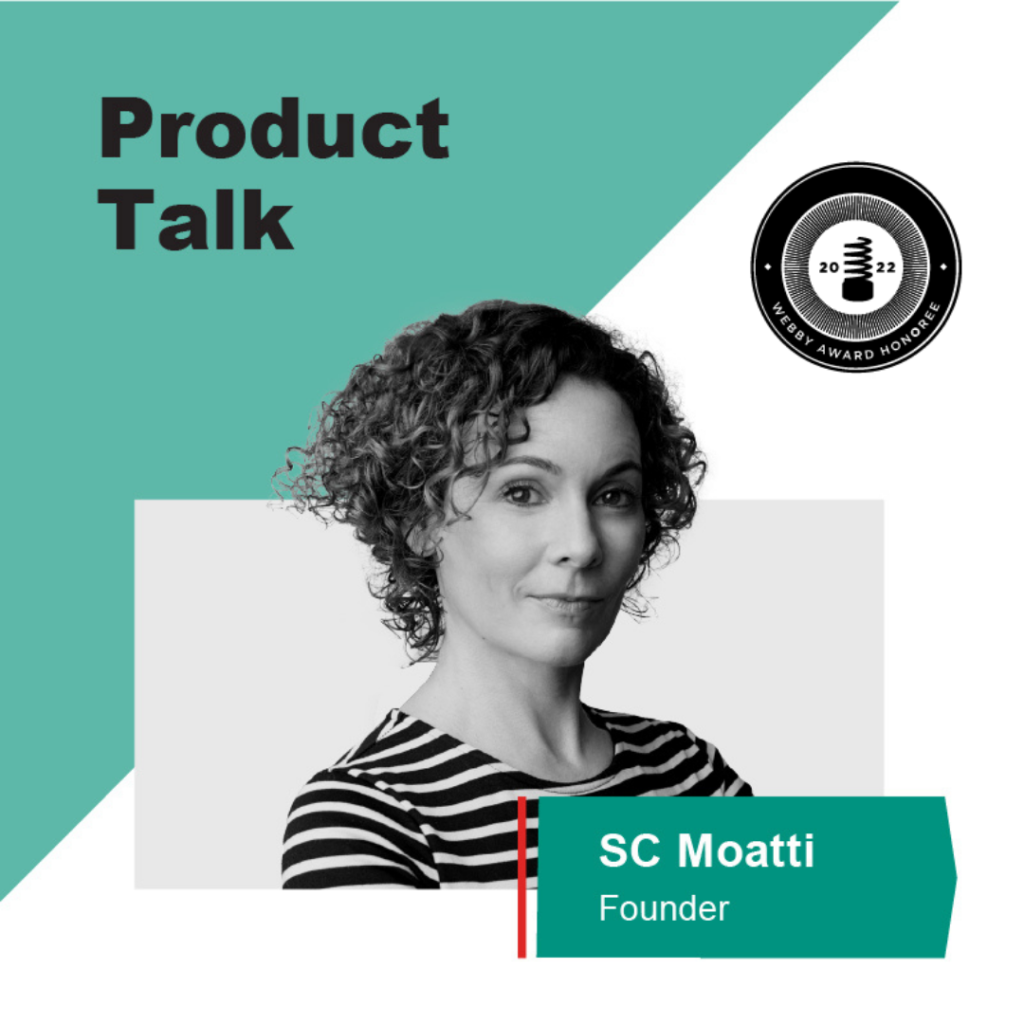This week on Product Talk, our host Universal Electronics Product Director Nikki Ahmadi marks our 150th episode with a leader who is no stranger to building successful products, be they in a startup or in the post-acquisition stage. Taking the mic, Dolby Sr. Director of Cloud Communications and former Founder and CEO of Voxeet, Stephane Giraudie, shares insights on the reality of being a product entrepreneur and how to approach building product at scale post-acquisition.
Listen to the entire episode right here on Products That Count and subscribe at the links below to get new product conversations delivered directly every week. Now, let’s roll through the highlights.

On the Conceive Stage of building product
It’s not easy taking an idea from the mind to the market, yet therein lies the essence of product management and the goal of every product leader. Starting off the conversation, Nikki asks Stephane to share his insights on the Conceiver Stage, and the frameworks he uses to move beyond ideation and into creation.
“At the beginning, capturing the voice of the customer is really important. Before we even started coding, we did 150 voiceover customer interviews here in the valley, from executives in large companies to small SMBs, really to try to understand their pain points.”
“When they use your product, people should be delighted. From the beginning, try to create some type of differentiation. In every iteration of the product, try to sprinkle in that ‘Wow’ moment, the thing that differentiates your product offering.”
“Make sure that even if you’re a product leader, that you bring in reinforcement very early on. You need to be nimble, even if you’re a big corporation.”
On dealing with disappointment and finding resilience
Daily life as an entrepreneur doesn’t typically mimic a day at the beach. The wins can be huge, and the losses can be heavy. Stephane tucks in advice on how product leaders who are building their own vision can stay resilient through difficult moments.
“I think I received at least 120 rejections from VCs and investors, but you just have to focus on the fact that every rejection is a step closer to your goal. The highs and lows are very strong, so you have to reframe those objections. You need a way to get it out of your system and reset pretty much on a daily basis.”
“It’s easy to look at the success, but when you look back, it’s messy. You’re following an iterative process, and it’s a succession of sprints, right? At the same time, you have to remind yourself and your team that you’re running a marathon. You have to keep up on the distance.”
On product evolution post-acquisition
Each phase of the product life cycle requires its own skillset that needs to be approached with care, finesse, and grit. Shifting the mindset from rapid iteration and hypergrowth to building the product at scale while meeting the goals of a larger company naturally comes with bumps. Stephane sheds light on the particulars of leading a product post-acquisition.
“Joining a B corporation, the risk sets are different. My role is not as an entrepreneur, now it’s to make sure that the transition from startup to scale is happening. It can really be frustrating at times but it’s also necessary. There are a lot more processes than you would have in a startup, more formalities, more meetings, but you have to get everybody aligned. This is critical.”
“It’s very important that you get the protection and support from the top level. I had board meetings pretty much every week, meeting with the CEO of Dolby every single week for the past year. That’s really tough, but this is critical to integrate the startup inside of a company. You need to be protected, and you need your space to get the embedding into the various groups, right. Then, as an entrepreneur, you need to help with the transition to make sure that you can move from that startup mentality to a scale mentality.”
“Bringing the Dolby magic to developers as a new business model for Dolby is very challenging but it’s also very interesting. Now with COVID and everything moving online, we are seeing an acceleration in a lot of use cases, like telemedicine, distance learning, collaboration, and social apps.”
About the speaker
About the host
Nikki is a cloud and software product Director who works with a global team of talented engineers and architects in designing and implementing innovative solutions from product inception to production. After spending over a decade working in product engineering and management for multimillion dollar technology and start-up companies, Nikki believes what truly drives innovation is not only a commitment to technological breakthroughs but also people’s passion in improving everyday lives by building products that leave a lasting impact, disrupt the industry, and are vehicles of change, while providing the best user experience. When Nikki isn’t working on her next big product release or entrepreneurial endeavors she is spending much needed time with friends and family discussing the latest politics, or simply the meaning of life. She’s an adventurous traveler who also enjoys capturing moments through photography. Nikki also holds a B.S. in Computer Engineering , M.S. in Electrical Engineering and has a corporate innovation certificate as part of the LEAD program.